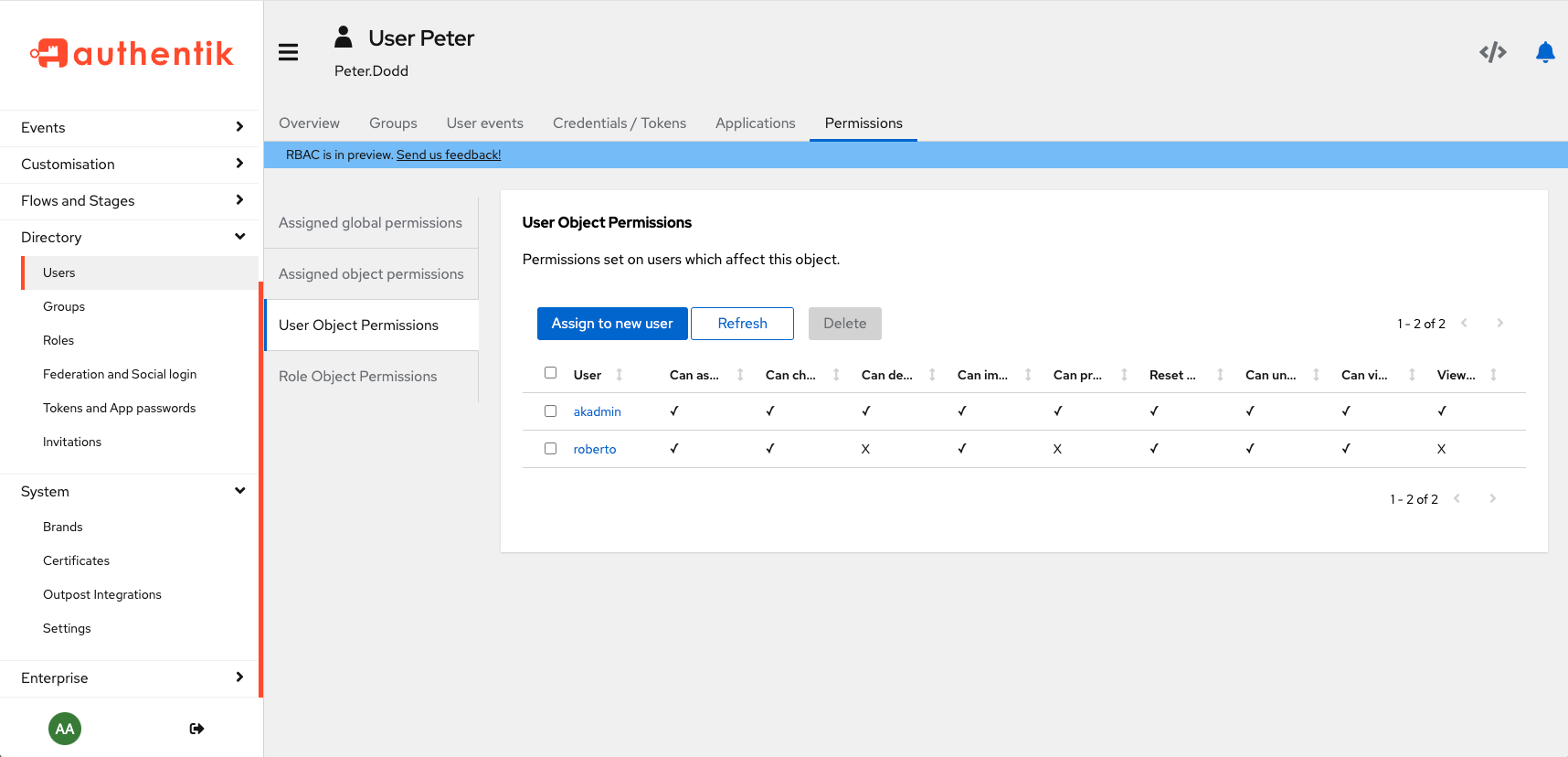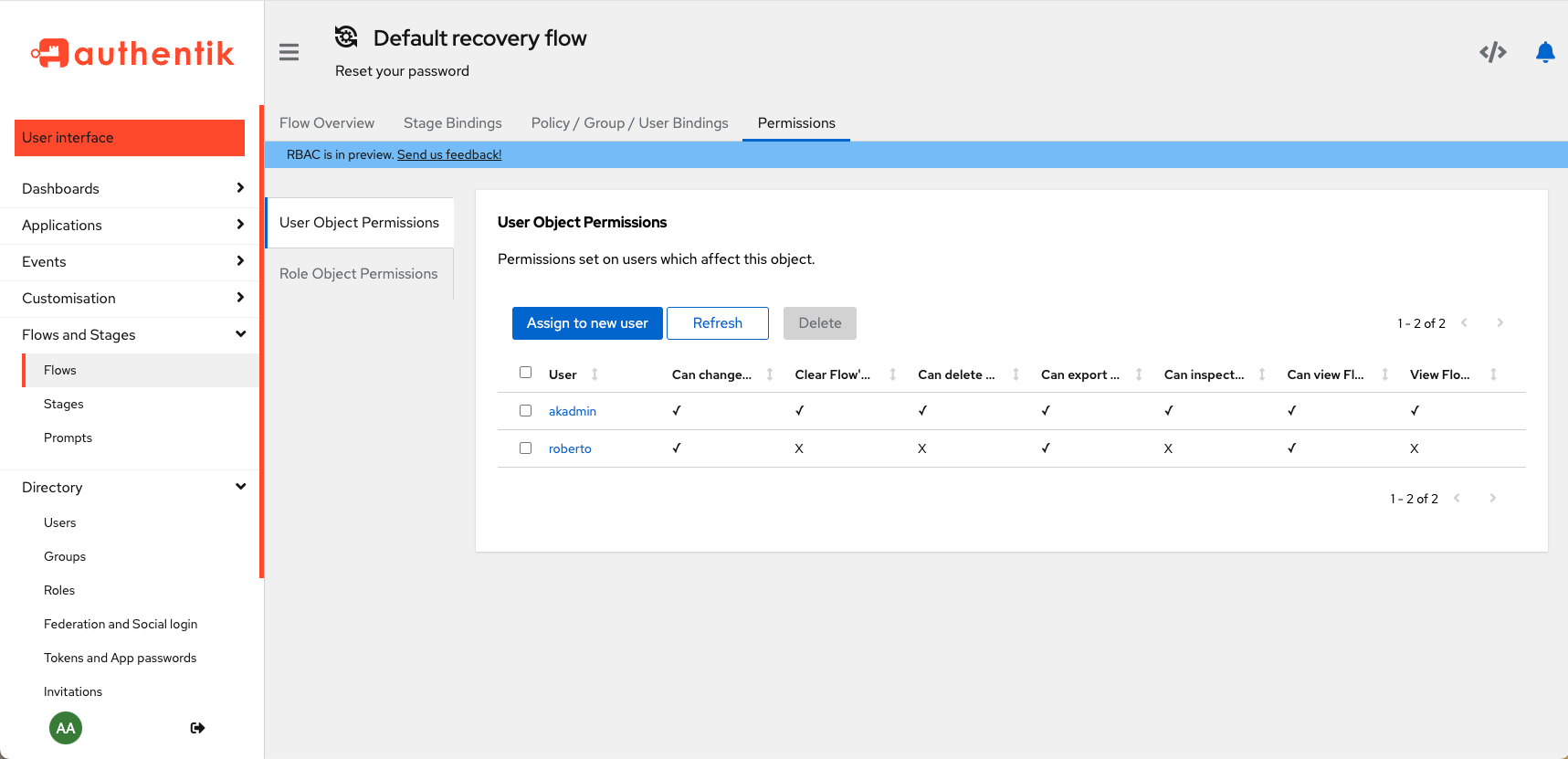2.8 KiB
| title | description |
|---|---|
| About permissions | Learn about global and object permissions in authentik. |
Permissions are the central components in all access control systems, the lowest-level components, the controlling pieces of access data. Permissions are assigned to (or removed from!) to define exactly WHO can do WHAT to WHICH part of the overall software system.
:::info Note that global and object permissions only apply to objects within authentik, and not to who can access certain applications (which are access-controlled using policies). :::
For instructions to add, remove, and manage permissions, refer to Manage Permissions.
Fundamentals of authentik permissions
There are two main types of permissions in authentik:
Global permissions
Global permissions define who can do what on a global level across the entire system. Some examples in authentik are the ability to add new flows or to create a URL for users to recover their login credentials.
You can assign global permissions to individual users or to roles. The most common and best practice is to assign permissions to roles.
Object permissions
Object permissions have two categories:
- User object permissions: defines WHO (which user) can change the object
- Role object permissions: defines which ROLE can change the object
Object permissions are assigned, as the name indicates, to an object (users, groups, roles, flows, and stages), and the assigned permissions state exactly what a user or role can do TO the object (i.e. what permissions does the user or role have on that object).
When working with object permissions it is important to understand that when you are viewing the page for an object, the permissions table shows which users or roles have permissions ON that specific object. Those permissions describe what those users or roles can do TO the object detailed on the page.
For example, the Admin interface UI shown below shows a user page for the user named Peter.
You can see in the User Object Permissions table that the Admin user (akadmin) and one other user (roberto) has permissions on Peter (that is, on the user object named Peter).
Looking at another example, with a flow object called default-recovery-flow, you can see that the Admin user (akadmin) has all object permissions on the flow, but roberto only has a few permissions on that flow.

